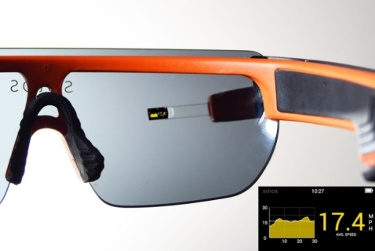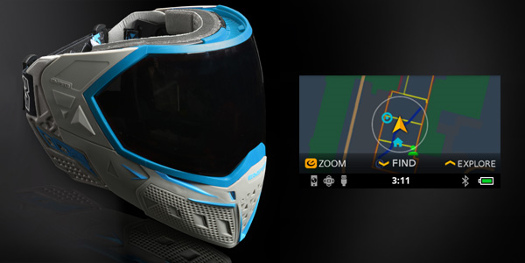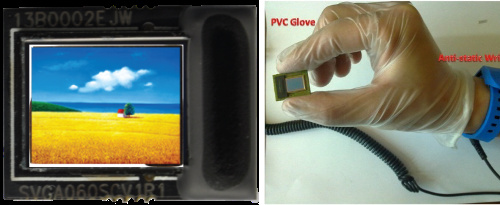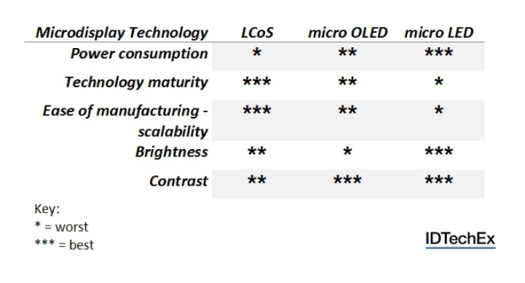 |
| February 16, 2016 | Volume 12 Issue 07 |
Designfax weekly eMagazine
Archives
Partners
Manufacturing Center
Product Spotlight
Modern Applications News
Metalworking Ideas For
Today's Job Shops
Tooling and Production
Strategies for large
metalworking plants
Microdisplays enable the virtual- and augmented-reality revolution
By Dr Harry Zervos, Principal Analyst, IDTechEx
If the buzz at the Consumer Electronics Show (CES) in Las Vegas in January was any indication of things to come (and it usually is), 2016 is expected to be the year of virtual reality (VR). The show featured much-anticipated VR headset launches, announcements of investment in enabling technologies, and developments of optimized components that made virtual reality the words on everyone's lips.

Kopin demonstrated a prototype of its Solos smartglasses at CES 2016 that featured a built-in, 4-mm module "pupil" hidden behind the rim and practically invisible from the outside. [Image: Kopin]
The new IDTechEx Research report on the topic of smartglasses, "AR & VR Smartglasses and Functional Contact Lenses 2016-2026," discusses the growth expected in the space for VR headsets, which the report finds are expected to ship in volumes of over 10 million units by 2019.
Following up on the excitement around eye-worn computing, I wanted to take a quick look at LCD, LED, and OLED microdisplay technologies, because they will compete for integration into smartglasses -- augmented-reality as well as virtual-reality ones -- a market that is expected to experience significant growth, with VR products leading the charge.
Microdisplay technology options: LCDs
Microdisplay technologies, initially developed for large-screen projectors, found a perfectly matched application in head-mounted displays. When Google Glass launched in 2013, it integrated a reflective, near-eye Liquid Crystal on Silicon (LCoS) display based on an LCoS chip from Himax Technologies.
Liquid crystal microdisplays are currently available from several suppliers and have been integrated in different headsets. Kopin's transmissive LCD on single crystal silicon transistors has been used in smartglasses from Vuzix and Recon, as well as in the company's own brand headset, the Solos. Devices based on ferroelectric liquid crystals (FLCoS for short), which have made a wide impact on applications as diverse as optical correlation and holographic projection, are also of interest here, as they are inherently faster switching than other liquid crystals.

Just released: Recon Instruments has partnered with Empire Paintball to introduce the Empire EVS, the world's first smart paintball mask, which combines a cutting-edge mask design with an integrated Recon Snow2 ultra-compact heads-up display. The headgear delivers real-time information like ammunition counts, field maps, and teammate locations on a wide-format Active-Matrix LCD (AMLCD) micro-display just below the wearer's right eye. [Image: Recon]
Microdisplay technology options: OLEDs
Non-emissive systems, like the LCoS described above, require an external lightsource with light always incident on every pixel, irrespective of whether said pixel is on or off -- an undesirable trait for any portable application where battery life is paramount.
Emissive types of displays rectify that problem and can be more energy efficient, which is one of the main reasons there is a significant interest in micro-OLED displays. Along with higher contrast, faster response time, and a wider operating temperature range, micro-OLEDs have been used in prototypes such as the smartglasses from Atheer Labs, with several companies developing products worldwide (e.g., eMagin, Yunnan OLiGHTECK, and MICROOLED).

OLiGHTEK SVGA060 Series low-power AMOLED microdisplay [Image: OLiGHTEK]
Unfortunately, current generations of micro-OLEDs are limited in brightness, and they experience short device lifetimes when run in high-brightness conditions. As a result, there is significant research and development effort in making brighter, longer-life OLEDs, with prototypes that use direct color emission rather than RGB color filter arrays showing significant promise in that respect.
Microdisplay technology options: LEDs
Micro-LEDs, also an emissive display technology that benefits from reduced power consumption, have been demonstrated to operate efficiently at higher brightness than that of an OLED display. In this respect, the technology can deliver an emissive, high-brightness solution. The drawback of LEDs is that they are inherently monochrome -- the phosphors typically used in converting color in LEDs do not scale well to small size, which leads to a requirement for more complicated device architectures. It is not yet clear how scalable these can be.
Which will be the winning technology?
In the short- to mid-term, the two major competing technologies are the two more mature ones: OLED and LCoS microdisplays.

Microdisplay technology comparison of key metrics. (Source: IDTechEx report "AR & VR Smartglasses and Functional Contact Lenses 2016-2026,"www.idtechex.com/glasses)
Other than the liquid crystal displays already in products, eMagin has just signed a non-exclusive agreement to supply its OLED microdisplay technology to an undisclosed client, with a $1 million licensing fee as a down payment, while other headset developers are testing OLED displays and their performance in their devices.
Assuming that micro-LED technologies overcome challenges relating to manufacturing complexity and scalability, we will potentially see them carving up market share in the future. VerLASE Technologies might be simplifying micro-LED structures (but also micro-OLED structures too) with its revolutionary Chromover wavelength conversion technology.
For more detailed information on suppliers, microdisplay technology comparisons, and benchmarking, profiles of the most significant players and market forecasts in the space for AR and VR smartglasses, read the new IDTechEx report "AR & VR Smartglasses and Functional Contact Lenses 2016-2026."
Also for more information, please visit www.IDTechEx.com/glasses.
Published February 2016
Rate this article
View our terms of use and privacy policy
